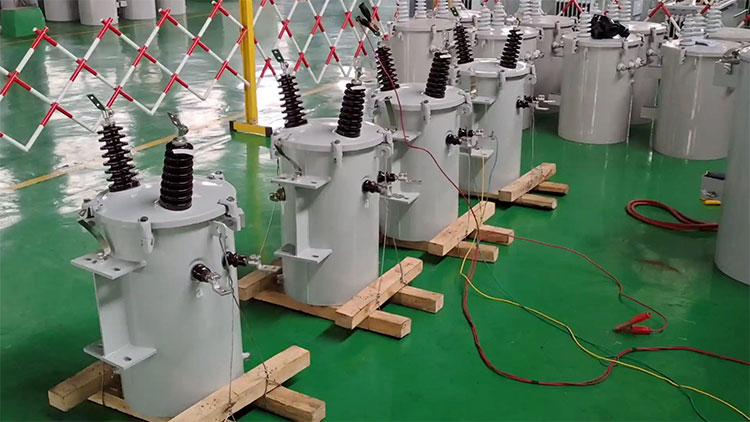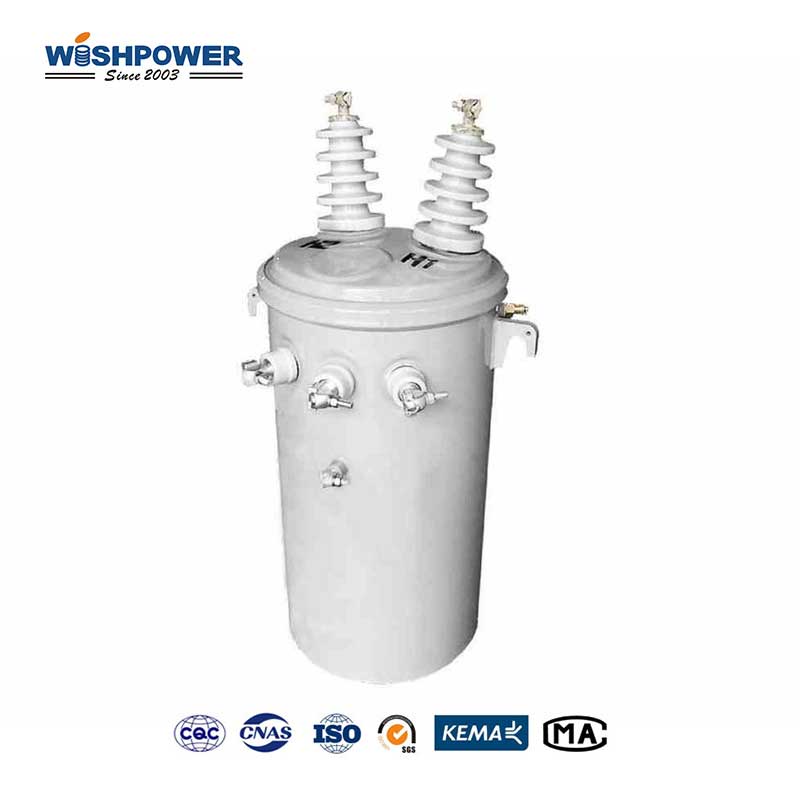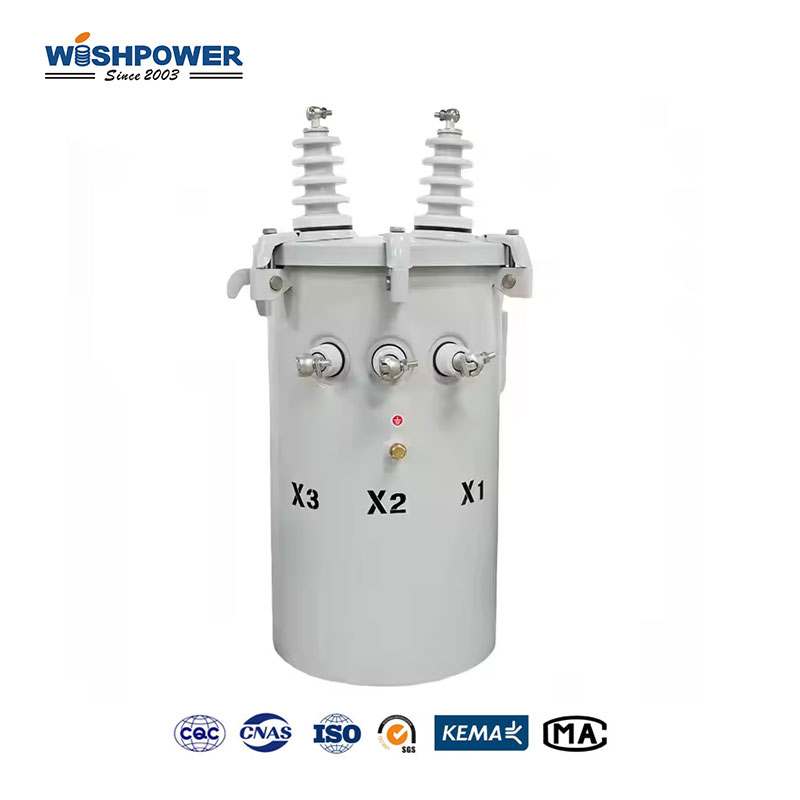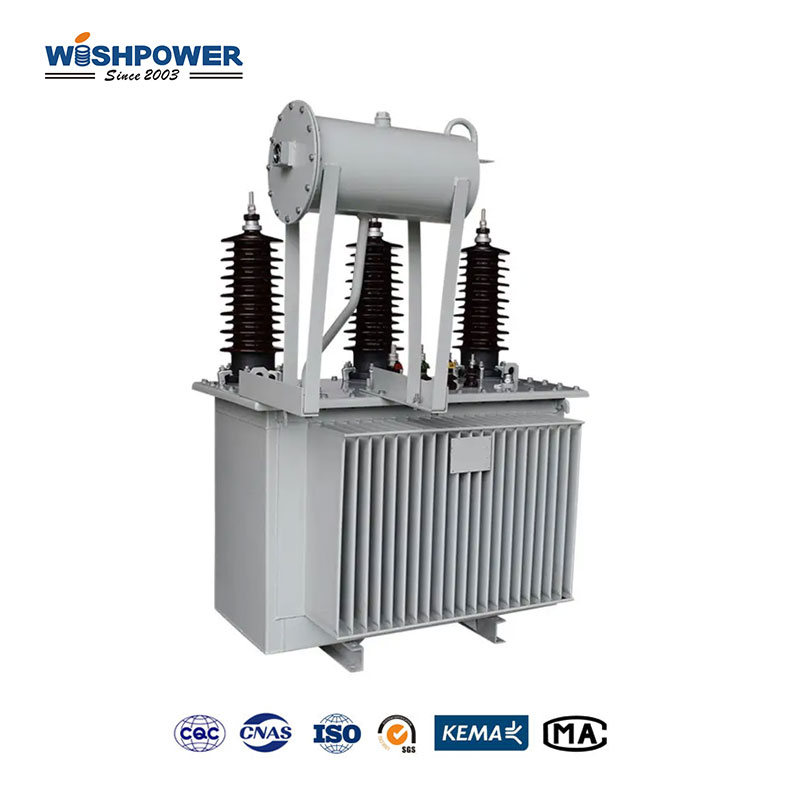Single-phase pole-mounted transformers are crucial components in power distribution systems particularly for rural and low-demand areas. Elevated installation and reduced risk of harm provide efficient power supply. But safety is necessary for their design and operation.

What Are the Safety Features of a Single-Phase Pole-Mounted Transformer?
- Robust Grounding System
A grounding system is an essential safety feature that a reliable grounding system must have. Fault currents directed to the ground protect the transformer and surrounding systems and do so in a safe manner. It reduces the risk of electric shock, damaged equipment, or fire occasioned by overvoltage or short circuits.
Lightning Protection: Lightning arresters are combined with grounding systems to keep voltage surges resulting from lightning strikes from occurring.
Personnel Safety: Good grounding helps prevent electric shock to personnel doing the maintenance or personnel close by.
- Oil Preservation and Containment System
For oil immersed single phase pole mounted transformers simple cooling and dielectric functions are not possible without insulating oil. They keep oil safe by sealing it off so it can’t leak or spill.
Sealed Oil Tank: The Transformer tank is sealed by us to stop oil leakage and contamination.
Pressure relief valves: During a fault, these valves open and release excess pressure to avoid rupture of the tank.
Eco-friendly oil options: Biodegradable insulating oils are now used in some transformers, to minimize environmental risk.
- Lightning arresters
Transformers cannot simply protected from high voltage surges due to lightning strikes or switching operations, lightning arresters are required for protection. They are placed on the high voltage side and deliver the overvolts to the ground protecting the inside components of the transformer.
Durable construction: Occasionally high-intensity surges may be experienced which would damage a device, but a lightning arrester is designed to operate repeatedly without degradation.
Coordination with insulators: Together they form a complete protective barrier that they work in with insulators.
- Overcurrent protection
Advances in transformer over-current protection devices (such as fuses or circuit breakers) are installed to break the transformer supply to stop it from overheating or damaging.
High-quality fuses: In short to isolate faults, these fuses are placed on the primary and secondary sides.
Coordination with the distribution system: It ensures that in case of fault, there is minimum disruption to the network.
- High-quality insulation
Single-phase pole transformers are used but will not be allowed to the used, as they lack the safety insulation needed against electrical faults.
Insulation: Materials that can produce high quality such as epoxy or silicone are used to increase the durability and resistance of the potted plant to environmental conditions.
Creepage: Good spacing between components keeps discharges out, even in wet or polluted environments.
- Fire Prevention
It is a well-established fact that fire prevention is an important consideration in transformer design, in particular for oil-filled units.
Non-flammable materials: Fire-resistant materials are used for components to mitigate fire hazards.
Cooling systems: They conduct heat away efficiently by natural convection or oil circulation so that overheating will not lead to a fire.
Fire barriers: Additional fire barriers are added to some designs, protecting other nearby buildings or vegetation.
- Elevated Mounting for Safety
Pole mounting offers several inherent safety benefits:
Flood protection: The transformer is at a higher location, so when the area floods, the transformer can’t be waterlogged.
Reduced risk of vandalism: They cannot be tampered with or vandalized, as pole-mounted transformers are less accessible.
Wildlife safety: Often there are protective barriers to prevent animals from coming in contact with live parts.
- Voltage Surge Protection
Voltage surge protection devices are supplied with transformers to act when unexpected voltage fluctuations occur. They protect sensitive internal components and downstream equipment.
Automatic Voltage Regulation: Some transformers include features to stabilize voltage under variations of loading conditions.
Transient Surge Suppressors: Suppressors are the type of devices that reduce the unwanted effect of sudden voltage spikes.
- Mechanical Durability
To withstand mechanical stress from external factors single-phase pole-mounted transformers are constructed.
Wind and Weather Resistance: The transformer is designed to handle strong wind, heavy rain, and extreme temperatures.
Anti-Corrosion Coating: The tank and external components are coated with a rust and corrosion coating.
Earthquake Resistance: Transformers need to be designed so they remain stable when in earthquake-prone areas.
- Compliance with Standards
The transformer design and testing are to meet stringent safety standards as a single-phase pole-mounted transformer.
National and International Standards: It guarantee safe operation by complying with IEEE, IEC, and local regulatory requirements.
Quality Assurance: Dielectric strength and load tests, as well as routine tests, check that the transformer conforms to safety specifications.
Conclusion
Single phase pole mounted transformers have safety features designed with great care to enhance their reliable operation, and minimize risks to the equipment, as well as to the environment and personal safety. Together these features form a powerful, safe power distribution solution that includes features from grounding systems and overcurrent protection through to advanced monitoring capabilities. Single-phase pole-mounted transformers remain important components of the modern power grid if they are built to these safety standards and employ advanced technologies.
If you have different opinions or want to know more, please leave a message on the website or contact us directly at info@wishpower.net

















